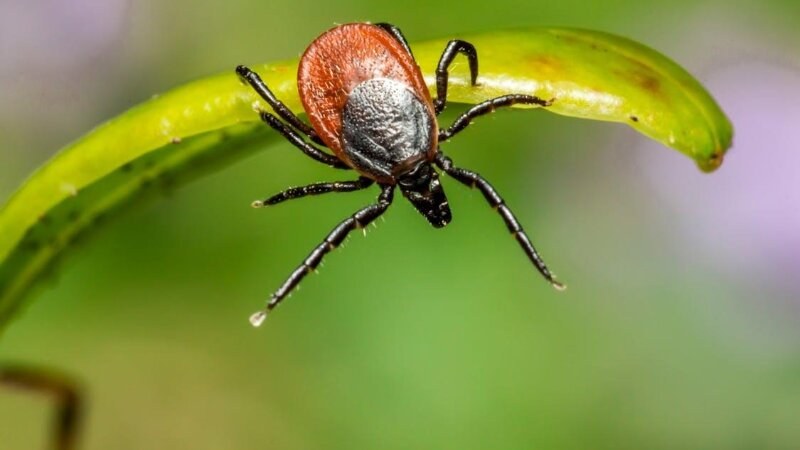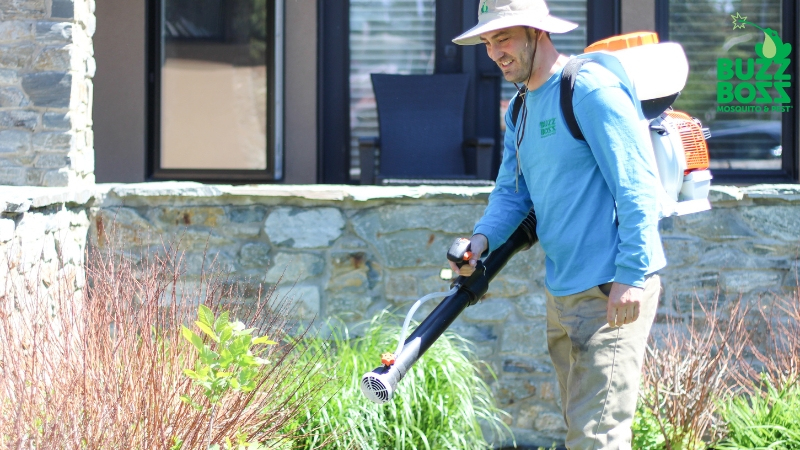An Uptick in Tick Problems - How to Stay Safe This Summer in Calgary
Reading time: 6 minutesYou might think summer in Calgary is all about catching some sun and enjoying barbecues, but it’s also peak season for pests. One of these unwelcome visitors is ticks—those blood-sucking vermins looking to turn any warm-blooded partygoer into their next meal.
As temperatures rise, ticks become quite active. Let’s look at what the increase in tick activity means and how you can keep yourself and your pets safe.

Tackling the Tick Problem
Common Ticks in Calgary
Knowing which ticks you might encounter is the first step in guarding against them. Here are the common ticks found in Calgary:
- American Dog Tick: These guys love hanging out in tall grass and shrubby spots, waiting to hitch a ride on anyone who walks by. They're most active when it’s warm and can carry Rocky Mountain spotted fever. It’s rare around here, but still, better safe than sorry!
- Black-legged Tick: Also called the deer tick, this little troublemaker is infamous for spreading Lyme disease, and now, babesiosis too (gee, thanks, bud). You’ll find them in wooded, humid places, especially during summer when they’re sneaky little nymphs. They’re tiny (which means they’ll sneak up on you without being noticed), making it easier for them to spread Lyme.
Other ticks that have been found in Alberta, although not as common, include the Rocky Mountain wood tick and the lone star tick.
Tick Behaviour and Habitat
Ticks are the ultimate opportunists, just waiting to latch onto any host that strolls by.
- Both the American dog tick and the black-legged tick love the summer heat.
- The dog tick particularly loves tall grasses and areas with shrubbery where it can easily access hosts.
- The deer tick, on the other hand, prefers the cooler, damper environments of wooded areas and lush parks.
The Dangers of Tick-Borne Diseases in Calgary
A tick bite is more than a nuisance; it can have serious consequences. Disease-carrying tick bites can transmit bacteria and viruses that cause diseases like:
- Lyme disease
- Babesiosis
- Anaplasmosis
- Powassan virus disease
Lyme disease is a particularly significant threat in Calgary, especially given the presence of black-legged ticks in the region.
A Closer Look at Lyme Disease
Lyme disease comes from the bacterium Borrelia burgdorferi, transmitted via bites from infected black-legged ticks. Early signs often include fever, headaches, fatigue, and a distinct skin rash known as erythema migrans.
If left untreated, the infection can spread to joints, the heart, and the nervous system, potentially causing long-term damage (this is rare, though, so there’s no need to panic).
Ticks typically need to be attached for 36 to 48 hours before the bacterium can be transmitted. Early detection and removal of ticks are crucial in preventing transmission.
Keeping yourself safe against Lyme Disease means using repellents, dressing in protective clothing, and conducting thorough tick checks after venturing into areas known for ticks.

Staying Tick-free This Summer
Personal Protection Tips
Some preventive measures you can take to protect yourself against these tiny bloodsuckers:
- Suit Up: Wearing the right clothing is crucial to ward off tick bites. Choose light-coloured garments. This makes it easier to spot ticks. Long-sleeved shirts and pants are a must. Tucking your pants into your socks and your shirt into your pants creates barriers that are tough for ticks to get through.
- Repellents are Your Best Friend: Apply insect repellent that contains DEET, picaridin, IR3535, or oil of lemon eucalyptus to exposed skin. Treating clothing and gear, such as boots, pants, and tents, with products containing 0.5% permethrin can provide long-lasting protection.
- Stay on the Path: Stick to the center of trails when you're out. This helps you avoid brushing against the vegetation where sneaky ticks are waiting to hitch a ride. It's their favourite ambush tactic.
- Regular Checks are Key: After spending time outdoors, especially in wooded or grassy areas, conduct full-body tick checks. Use a hand-held or full-length mirror to view all parts of your body and remove any ticks found.
Pay special attention to under the arms, in and around the ears, inside the belly button, behind the knees, between the legs, around the waist, and especially in the hair.
Removing a Tick
If you find a tick attached to your or your pet’s skin, remove it as soon as possible. However, not all removal methods are safe or equal. Here’s a safe and effective way to do it:
- Grab the tick as close to the skin's surface as possible using a fine-tipped tweezer. Avoid using bare hands. If tweezers aren’t available, wear gloves or cover your fingers with tissue paper to avoid touching the tick.
- Don't twist or jerk the tick because they might cause parts of the tick to break off and remain in the skin. Instead, pull upward with steady, even pressure. If the mouth parts do break off and remain in the skin, try to remove them with the tweezers. If you cannot remove the mouth easily with clean tweezers, leave it and let the skin heal.
- After removing the tick, thoroughly clean the bite area and your hands with rubbing alcohol or soap and water.
- Submerse the tick in alcohol, place it in a sealed bag/container, or wrap it tightly in tape. Never crush a tick with your fingers.
- Over the next few weeks, watch for symptoms of tick-borne diseases, such as rash or fever. Consult a healthcare provider if you develop symptoms.
Proactive Tick Control
Keeping ticks at bay starts right in your backyard. Here’s how you can make your outdoor space less welcoming to these pesky critters:
- Keep It Trimmed: Regularly mow your lawn to keep the grass short. Ticks are less likely to hang out in short grass.
- Declutter the Outdoors: Clear out leaf litter, trim back bushes and trees from lawn edges, and cut down tall weeds. This reduces the cool, moist environments that ticks thrive in.
- Optimise Sunlight: Ticks aren’t fans of dry, sunny areas. Prune dense branches to let more sunlight into your yard, making it less tick-friendly.
- Create Barriers: Consider laying down gravel or wood-chip barriers between your lawn and wooded areas. This can discourage ticks from crossing over into your recreational spaces.
Professional Tick Control Services
Here’s where we come in. Buzz Boss offers specialized tick control solutions that are a step above DIY methods:
- Expert Application: Our trained professionals apply treatments specifically designed to target and eliminate ticks effectively.
- Customized Strategies: Each yard is unique, and so is our approach. We assess your situation and customize our treatment to cover all potential tick hotspots.
- Ongoing Protection: Especially beneficial for properties adjacent to wooded areas or fields, we provide peace of mind with regular maintenance checks and necessary follow-ups.

Bite Back with Buzz Boss
Ready to reclaim your backyard from those pesky ticks? BuzzShield™ Complete is your frontline defence, ensuring your summer is marked by fun, not bites. Request your free estimate and let us show you what a tick-free world looks like.
From Calgary to Edmonton and all across Western Canada—Red Deer, Regina, Saskatoon, Winnipeg, Okanagan, and Kelowna—we’ve got you covered.
Let Buzz Boss make your outdoor spaces a no-tick zone!

